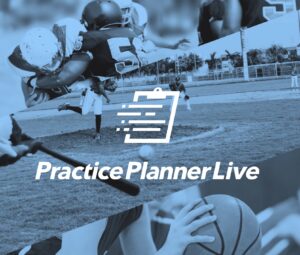There are thousands of basketball drills available in videos, books, and on the internet these days. But how can you tell which one’s a good practice drill and which one isn’t? That’s among the most difficult aspects of practice planning for new basketball coaches. Sometimes, though, it’s as easy as finding a veteran coach and building off what they used to be successful.
Here are 9 tips to recognize a good basketball practice drill that I learned from ultra successful coach Burrall Paye.
Practice Drill Tip 1: Make It Game-Like
When I was in school I was always frustrated by the teacher who would teach us tons of stuff only to find out that none of it was on the test. The gym is your classroom and the games are the test.
Help your students (players) pass the test (win the game) by teaching them what they need to know and giving them a preview of how to apply it. If it doesn’t happen in the game don’t do it in your team practices.
Practice Drill Tip 2: Make It Relevant
There are a lot of coaches who fill their practices with drills that they ran when they were in high school or college or with “favorite” drills that they have picked up along the way – even though those same drills have absolutely nothing to do with their current offense, defense, or coaching philosophy.
If a drill is not applicable or transferable to what you are trying to teach your current teams then don’t do it!
Practice Drill Tip 3: Make It Progressive
If you can lift 10 pounds in September and are still lifting 10 pounds in August you might be lifting all the time but you’re not getting any stronger. The same is true with your drill work in practice.
The best drills grow right along with your players and give them the opportunity to improve over the course of the entire season.
Practice Drill Tip 4: Make It Competitive
One of the most important and productive things you can teach your players is how to be competitive and the use of competitive drills is a great way to do this.
Whether your players are competing against another player or team, competing against themselves or competing against the clock they will benefit from increasing their competitive level as well as their skill level. Most non competitive drills are useless.
Practice Drill Tip 5: Incorporate Conditioning
Ask yourself this – how much does your team have to run at the end of practice to improve their conditioning? If it’s a lot then you are not using enough drills that contain a built in conditioning component.
Keep everyone moving, reduce standing around and remember that just about every half court drill can be turned into a full court drill with just a little tweaking.
Practice Drill Tip 6: Don’t Be Too Complicated
Great drills should make your players stretch their levels of skill, concentration and teamwork and in many cases should be tougher than an actual game situation.
However, the drills should not be impossible to master, especially at lower levels where constant perceived failure could permanently damage a player’s confidence.
Practice Drill Tip 7: Keep Groups Small
We all know and accept the fact that repetition is the mother of all learning. Then why do we run drills where lots of players are standing around watching and then only get a few repetitions when it is finally their turn?
Instead, divide the team in half and run the same drill at both ends of the court so there is less standing and more practicing. Better yet, utilize all your assistant coaches and managers and organize a series of timed drill stations where every player is constantly working and learning.
Practice Drill Tip 8: Incorporate Decision Making
If you can teach your players to be competitive and make good decisions you’ve already won half the battle. This is difficult for those coaches who want complete control over every possession and every player. That said, teaching kids how to make good decisions is synonymous with teaching them how to play.
Since there are a limited number of timeouts, at some time in every game your players will need to make some decisions on their own. It’s better that they learn how to do that in practice instead of “winging it” when the game is on the line.
Practice Drill Tip 9: Keep It Fun
Granted, not all drills need to be fun but at least they should be interesting and challenging. This is especially true with younger players and as the season progresses. LA Clippers assistant coach Kevin Eastman says that fatigue and boredom are the two biggest practice killers.
Be creative. You wouldn’t want to eat chicken cooked the exact same way every single night for 6 months! So of course, your players don’t want to run the exact same closeout drill every single night of the season!
Don’t fall into the trap of drilling just for the sake of drilling. Make sure each drill is run with a purpose and fits into your practice objective for that particular day. If you follow the 9 tips above you can become what Kevin Eastman calls a “skill coach not a drill coach.”
Related: 6 Tips to Improve Your Quick Hitters
Resources:
 Practice Planner Live
Practice Planner Live
Failing to prepare is preparing to fail! Quickly create, organize, & manage your practice plans all in one place to help win games.
Create detailed practice plans! Add drills, notes, diagrams, videos, & groups with an easy-to-use interface to create a detailed practice plan in no time!
Take a risk free,14-day trial at PracticePlannerLive.com today! No credit card required!
If you found this useful, don’t forget to check out additional blog posts at TeachHoops.com. Also, check out TeachHoops on Facebook, Twitter, Instagram and YouTube.


